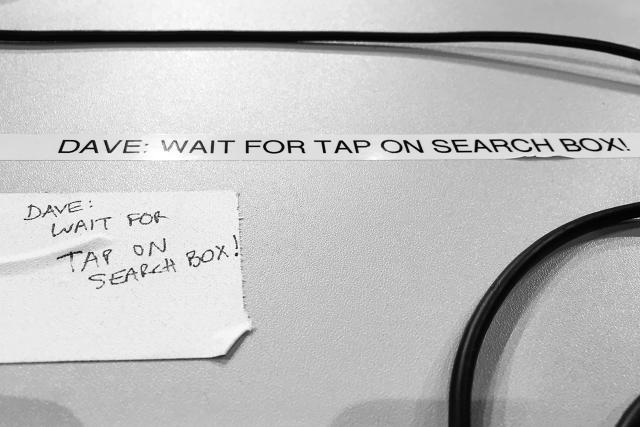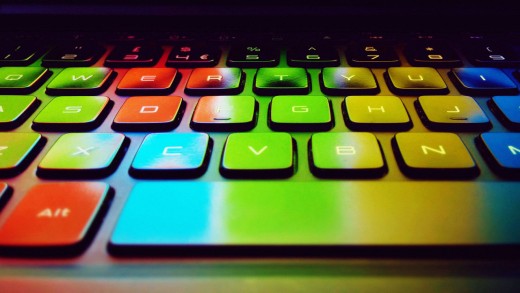From Startup Bigshot to big Tech Hotshot: David Lieb’s Bumpy journey To Google
the upward thrust And Fall Of Bump
once upon a time in Silicon Valley, Bump technologies was once a tech world darling, thanks to its signature product, Bump, an app that allow people exchange contact information by way of literally bumping their telephones together. Bump was once one of the vital Apple App retailer’s early hits, and was once described through Time in 2012 as “one of the vital apps that helped to define the iPhone.”
the corporate had millions of greenbacks in funding from A-record investors like Andreessen Horowitz and Sequoia Capital. Bump’s CEO, David Lieb, a former Texas gadgets engineer, had happily traded in the corporate world for a fast-paced, excessive-vitality life top a sizzling startup.

but regardless of all of Bump’s successes—tens of thousands and thousands of downloads, fawning headlines, and early membership in the alumni network of the Valley’s most effective incubator, Y Combinator—the revenue never followed. Bump, in any case, was once free to use.
even though in the beginning built simply to let individuals exchange contact information, Bump’s feature set improved to allow users to swap photographs too. Internally, the company’s engineers discovered that they had such great data on how individuals had been the use of the app that their algorithms could predict which photos users would share, and who they’d share them with, even ahead of they Bumped, Lieb recalled.
That perception led Bump to create a 2nd app, Flock, a social photograph-sharing tool aimed at mechanically sharing photography between family and friends, especially those with whom they’d long past to occasions.
Flock was designed to create shared picture albums that might “magically” replenish with photos taken by means of more than one folks at an adventure—even photographs taken earlier than any of those people ever downloaded the app. It was once an impressive feat of computer learning that sought to unravel a difficult drawback faced through with reference to everybody at a time when smartphone adoption was skyrocketing and the general public used to be losing regulate of their ability to regulate the flood of images they snapped.
Like Bump, Flock was once free, and it never skilled the huge adoption of its sister app. That was once an immense drawback for a tool that required a significant choice of users so as to be truly efficient. So while Bump applied sciences had two incredible apps, it had little earnings. It also had VCs keen to look huge returns on their investment.
In Silicon Valley, everybody knows where that story leads: an acquisition, and not the kind that ends up with tales in the tech press lauding their success.
That’s just what came about. In September 2013, Google introduced it had offered Bump technologies. although Lieb said at the time that “we couldn’t be extra thrilled to enroll in Google” and that the Bump and Flock apps would “continue to work as they at all times have for now,” no Valley veteran should have been shocked when just three months later, Google shuttered the two apps.
conventional of such transactions, neither side disclosed the terms of the sale. but TechCrunch mentioned that the deal, pegged by sources at about $35 million, “used to be indisputably not a home run for Bump….that might be a modest top class on Bump’s $19.9 million in funding however not a glowing multiple [the company’s investors] would want to brag” about.
Google would not touch upon the phrases of the acquisition.
For his section, Lieb instructed me that “the plan was all the time that [the apps] have been ultimately going to be sunset. The question used to be timing and mechanics. We went into it with a clear working out that those things were going to go and we were going to focus on Google photos and other things photograph-associated.”
From The Very high To…pretty high Up
On may 28, 2015, after a 12 months-and-a-half of out of the highlight, Lieb strode onto the stage at Google I/O, the tech giant’s annual developers convention in San Francisco, to lend a hand his boss, Google general manager Anil Sabharwal, announce and exhibit the all-new Google images.
This was the biggest target market Lieb had ever spoken in entrance of. Counting these in the room and people on-line, there have been more than 2 million individuals observing his each motion.

Lieb used to be now the product lead for Google photographs, which offers iOS and Android customers free limitless photo storage within the cloud, pure language seek for pictures, the ability to acknowledge faces (even in an adult’s childhood photos), and automated group of images through class (folks, locations, issues). He was once enjoying a public position that may have been unfamiliar to him. reasonably than being the man at the high of the pyramid, he used to be a type of tech firm individuals who come out on stage to demo a product before handing the microphone again to the higher-ups.
As quick company’s Harry McCracken put it on the web site’s reside-weblog of the event, “One difference between [Apple’s Worldwide Developers Conference] and that i/O: you understand most of the people who will demo at WWDC. With IO, there are recent faces, particularly this 12 months.” It wasn’t just Google’s largest executives—Larry web page, Sergey Brin, or Sundar Pichai—on stage at I/O. whereas Lieb is well-known all the way through Silicon Valley, this used to be one thing of a reintroduction for him.
while Bump and Flock were nowhere to be considered on stage that day, the work Lieb and his team had executed used to be very a lot in proof.
“We took the seed of the speculation we notion we had discovered,” Lieb informed me recently, and let it develop and nurtured it [to] convey it to everyone on this planet. That was once the rationale we chose Google. It was why we decided to promote the corporate.”
There’s without a doubt that it was painful when Bump and Flock got shut down—”yeah, it at all times hurts,” Lieb stated—but Bump’s complete workforce was able to enroll in Google and assist construct what quantities to a Gmail for images, an app that helps remedy one of the crucial greatest problems folks face on the subject of their digital pictures: organization and storage.
“the good thing was once that our imaginative and prescient for what that photograph problem was, and how to clear up it, used to be very aligned with Google,” Lieb said. “Google, being Google, has a hit merchandise, and Android, and had a singular point of view on what individuals confronted with pictures….They foresaw the same catastrophe looming, a photograph Armageddon, where that you would be able to’t share [or store] all your images.”
Lieb stated that Bump talked to a variety of big Silicon Valley firms a few possible acquisition. however no longer best did Google see that drawback the same approach that the Bump team did, it also gave the impression committed to solving it, something the startup’s different doable suitors weren’t, he stated.
a big Adjustment—but now not The unsuitable One
Being the CEO of a startup is very totally different than being the product lead at a large public firm.
“the toughest thing for me used to be that at the startup, [investors like Marc] Andreessen would say, ‘Dave, we belief you, you figure out what’s easiest for the company,’” Lieb said. “all the selections are your choices. At Google, you’ve gotten bosses. that you could’t simply say, ‘I’m doing this, belief me.’ you need to convince them why. That used to be the part that used to be new for me, and a number of entrepreneurs must research that talent.”
delivered Lieb, “a few of them can’t learn [it] and there’s organ rejection. however at Google, it’s labored very well.”
partially, that’s for the reason that Google pictures staff operates lots like a startup. There’s minimal forms and not too many conferences, in addition to an open place of job layout that helps the kind of fast product building Lieb and his Bump staff had been used to.
“If I simply transported you right here, and plopped you down,” he mentioned, “individuals would say it seems like a startup place of job.”
That’s no coincidence. Lieb stated that for years, Google has tried to operate that means, with flat organizational structures and numerous choices made with the aid of individuals at the product degree.
it can be working when you consider that, Lieb noted, no longer a single person from the Bump group has left when you consider that joining Google. “That’s pretty uncommon relating to acquisitions,” he claimed. in all probability the promise of having get entry to to Google’s large tools, and what that implies for product development, has as so much to do with it as the rest. And Google, after all, was once hardly ever new to tackling photographs when it offered Bump. for instance, it had received Picasa, a photograph-sharing and group app, in 2004 (it’s going to shut Picasa down this spring). The tech large had cared about the problem of photograph organization for a long time, Lieb mentioned; when the Bump staff arrived, Google was once at a the most important decision-making level about which path to head with the technology.
“We got here in at an interesting time,” Lieb said. “We had been ready to contribute thoughts on…the controversy. We concept it [needed] to be a photograph-management device corresponding to Gmail. It was time for that to exist for photos: It needed to be all cloud-based, accessible on all devices, and intelligently prepared.”
With Flock, Lieb’s staff had had some great ideas and nice technology. however they hadn’t had the instruments to appreciate the app’s full attainable. in large part, it was once concerning the know-how limits of what a 20-person startup could build versus the know-how elements that a behemoth like Google already had built.
“when we arrived” at Google, Lieb recalled, “it used to be like, ‘Holy cow there’s powerful know-how we didn’t have get admission to to as a startup….We noticed incredible computer vision know-how, and strong desktop finding out capabilities….At Bump, it used to be like, we wished shall we try this, but we couldn’t. here, they already did that.”
The numbers discuss for themselves. whereas the Bump app had tens of millions of downloads, it took the corporate five years to succeed in 10 million month-to-month active customers, Lieb said. by comparability, it took Google photographs simply 5 months to go 100 million.
“after I appear again and that i take a look at how exhausting we worked to get these 10 million” customers, Lieb said, “and then coming to Google and working at the Google scale, [it’s amazing] how quite low stress it’s been to amplify to a hundred million monthly active customers in lower than 5 months. We simply have techniques in position that make it in reality easy to build merchandise at massive scale.”
to be sure, Lieb is happy with what he and his team built at Bump. in any case, the corporate’s authentic app broke vital new ground within the iPhone ecosystem, and made one thing as crucial to our day-to-day lives as changing contact information as easy as, yes, bumping phones together.
“but comparing that to what we’re doing here, it’s just night and day,” Lieb mentioned. “here, each little thing that we construct touches hundreds of thousands or tens of hundreds of thousands or a whole lot of millions of people.”
That, of course, explains why so many individuals have been staring at when Lieb and Sabharwal demoed Google pictures at I/O ultimate 12 months.

it all went easily, however in rehearsals, Lieb kept making a small mistake—he kept tapping the Google pictures search box prior to Sabharwal was once prepared for him to take action.
“So I wrote this note to myself: ‘Dave, stay up for the faucet on the quest box,’” he stated, smiling. “I showed up the next day for the keynote, and the crew had made a certified label with the same [message an d] printed it out for me. That was once the moment the place I’m like, ‘Ooh, we’re within the varsity leagues now. This isn’t JV anymore.’”
the upward thrust And Fall Of Bump
quick company , read Full Story
(55)














